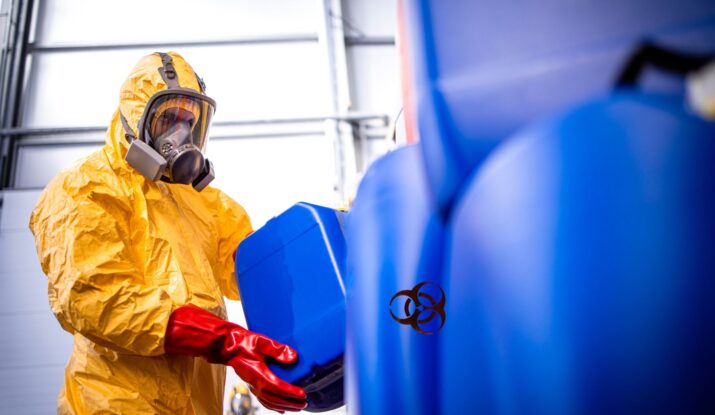In this article, we will explore the dangers posed by biohazards and provide you with valuable insights on how to effectively safeguard your health. Biohazards can be found in various environments, including hospitals, laboratories, and even your own home. By understanding the potential risks and implementing precautionary measures, you can ensure a healthier and safer lifestyle for yourself and your loved ones. So, let’s dive into the world of biohazards and equip ourselves with the knowledge to protect against them!
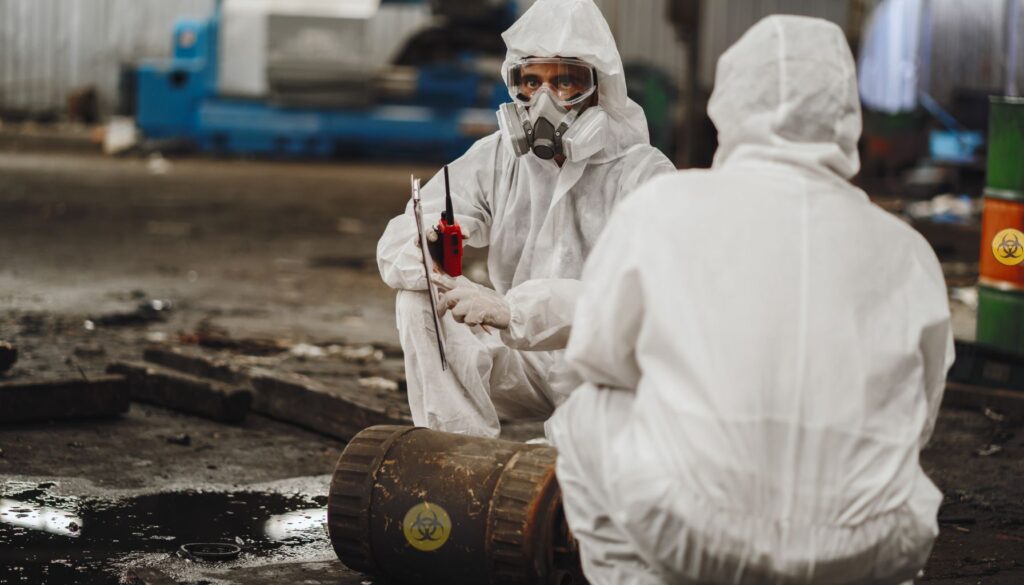
Understanding Biohazards
Biohazards are substances that pose a significant risk to human health and the environment due to their biological nature. They are capable of causing infectious diseases, toxic effects, and allergic reactions. It is crucial to have a comprehensive understanding of biohazards and how they can be transmitted in order to effectively safeguard your health.
Definition of Biohazards
Biohazards, also known as biological hazards, are substances derived from living organisms or their products that can potentially harm living organisms. These hazards can include a wide range of sources, such as bacteria, viruses, fungi, parasites, and toxins produced by living organisms. Biohazards are classified into different levels based on their potential risk to human health, with Level 1 being the lowest and Level 4 being the highest.
Sources of Biohazards
Biohazards can originate from various sources, both natural and man-made. Natural sources include animal waste, infected plants, and contaminated soil or water. Man-made sources encompass medical waste, laboratory samples, and industrial processes involving biohazardous substances. It is essential to identify and understand the potential sources of biohazards to prevent exposure and minimize the risks associated with them.
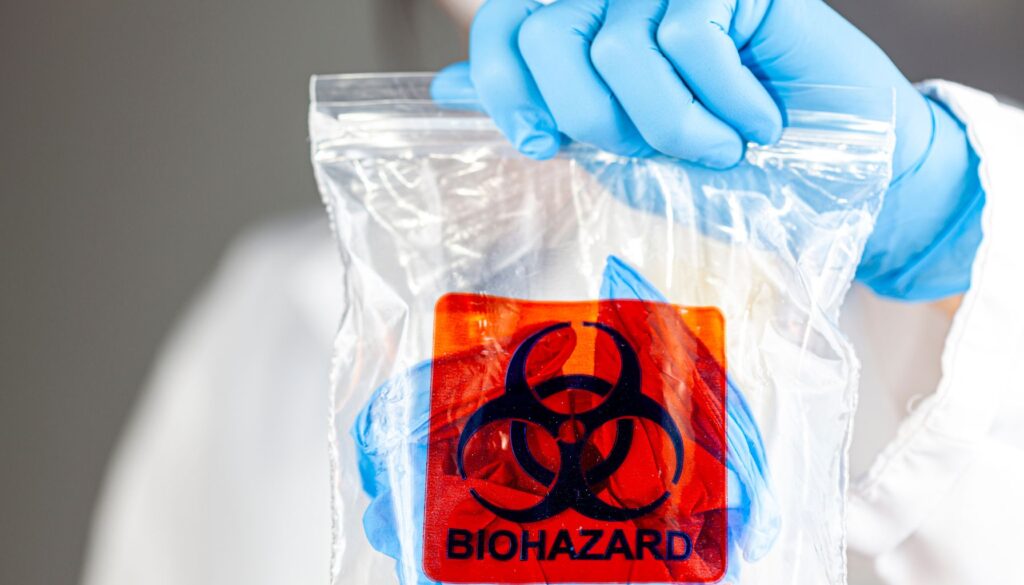
Types of Biohazards
Biohazards can be categorized into three main types based on their mode of transmission: infectious diseases, toxic effects, and allergic reactions.
Infectious Diseases: Biohazards can cause a wide range of infectious diseases, including respiratory infections, gastrointestinal illnesses, and bloodborne diseases. These diseases are typically caused by pathogens such as bacteria, viruses, and parasites.
Toxic Effects: Certain biohazards produce toxins that can have harmful effects on the human body. Examples include toxins produced by bacteria like tetanus or botulism. Exposure to these toxins can lead to severe health complications.
Allergic Reactions: Some individuals may develop allergic reactions to certain biohazardous substances, such as pollen, mold spores, or animal dander. These reactions can range from mild symptoms like sneezing and itching to severe anaphylaxis in extreme cases.
Understanding the different types of biohazards is crucial for implementing appropriate safety measures to prevent exposure and protect your health.
Health Risks Associated with Biohazards
Exposure to biohazards can lead to various health risks, including the transmission of infectious diseases, toxic effects, and allergic reactions. It is essential to be aware of these risks to take necessary precautions and safeguard your health effectively.
Infectious Diseases
The primary health risk associated with biohazards is the transmission of infectious diseases. Pathogens such as bacteria, viruses, and parasites can cause a wide range of illnesses, from mild to severe. Common infectious diseases caused by biohazards include influenza, HIV/AIDS, tuberculosis, and hepatitis. These diseases can be transmitted through direct contact, droplets in the air, contaminated surfaces, or vectors such as insects or animals.
Toxic Effects
Certain biohazards produce toxins that can have detrimental effects on human health. Exposure to these toxins can cause various symptoms, depending on the specific biohazard. For example, exposure to the toxin produced by the bacteria Clostridium botulinum can lead to botulism, a severe paralytic illness. Similarly, exposure to certain molds can produce mycotoxins, which can cause respiratory issues, allergic reactions, and even neurological effects.
Allergic Reactions
Biohazardous substances can trigger allergic reactions in individuals who are sensitive or allergic to specific allergens. These reactions can range from mild symptoms like sneezing, itching, and rashes to severe allergic responses, including anaphylaxis. Common biohazardous allergens include pollen, mold spores, animal dander, and certain food proteins. It is important to be aware of these potential allergens and take necessary precautions to avoid exposure.
Understanding the various health risks associated with biohazards is crucial for implementing appropriate safety measures and protecting yourself from potential harm.
Methods of Biohazard Transmission
Biohazards can be transmitted through different modes, including direct contact, indirect contact, and airborne transmission. Understanding these modes of transmission is essential for preventing the spread of biohazards and minimizing the risks associated with them.
Direct Contact
Direct contact transmission occurs when an individual comes into physical contact with a biohazardous substance or an infected person. This can happen through activities such as touching contaminated surfaces, shaking hands with an infected individual, or engaging in sexual intercourse. Pathogens present on the skin, bodily fluids, or surfaces can be easily transmitted from person to person through direct contact.
Indirect Contact
Indirect contact transmission occurs when an individual comes into contact with a contaminated object or surface that carries biohazardous pathogens. This can include touching contaminated medical equipment, using shared utensils, or handling contaminated materials without proper protective measures. It is important to practice proper hygiene and disinfection protocols to minimize the risk of indirect contact transmission.
Airborne Transmission
Airborne transmission occurs when biohazardous pathogens become suspended in the air as droplet nuclei or dust particles and are inhaled by individuals. This mode of transmission is particularly concerning for respiratory infections like tuberculosis, influenza, and COVID-19. Proper ventilation, wearing appropriate personal protective equipment (PPE), and maintaining distance from infected individuals are crucial in reducing the risk of airborne transmission.
Understanding the methods of biohazard transmission is essential for implementing effective preventive measures and limiting the spread of infectious diseases and other biohazards.
Biohazard Safety Precautions
To protect yourself from biohazards, it is important to follow specific safety precautions. These precautions include using personal protective equipment (PPE), practicing proper waste disposal, and maintaining good hand hygiene.
Personal Protective Equipment (PPE)
PPE plays a critical role in preventing exposure to biohazardous substances. This can include wearing gloves, masks, gowns, and goggles, depending on the nature of the biohazard and the specific tasks being performed. PPE acts as a physical barrier, reducing the risk of direct contact and airborne transmission.
Proper Waste Disposal
Proper waste disposal is essential for preventing the spread of biohazards. This includes segregating biohazardous waste from regular waste, using designated containers, and following local regulations and guidelines for disposal. Establishing proper waste management protocols minimizes the risk of accidental exposure to biohazardous materials.
Hand Hygiene
Maintaining good hand hygiene is crucial in preventing the transmission of biohazards. This involves regularly washing hands with soap and water for at least 20 seconds, especially before and after handling biohazardous materials, using the restroom, or eating. In the absence of soap and water, using alcohol-based hand sanitizers can be an effective alternative.
Adopting these biohazard safety precautions is vital for protecting yourself and minimizing the risks associated with biohazard exposure.
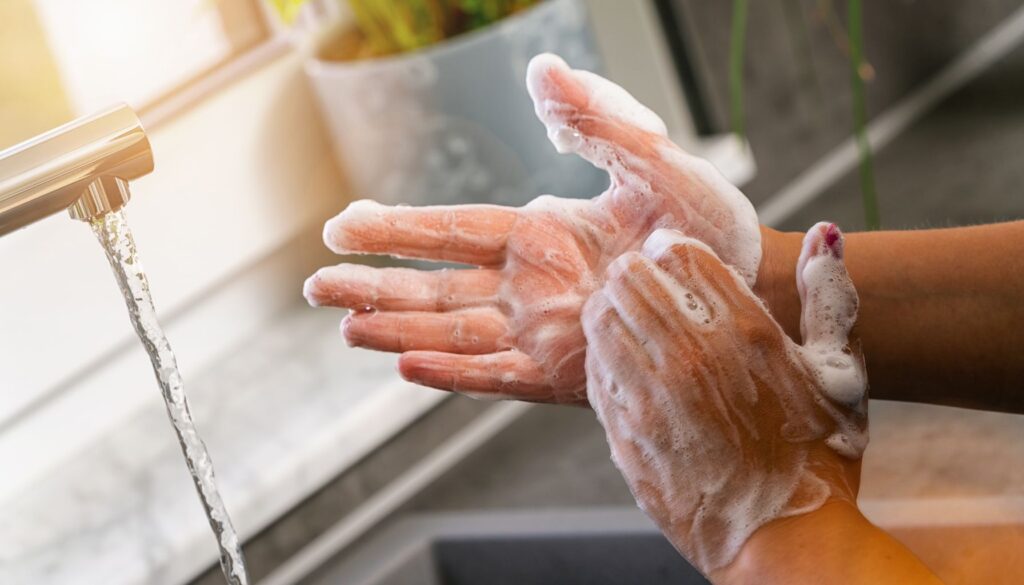
Workplace Biohazard Safety
Different settings present unique biohazard risks, and specific safety measures should be implemented accordingly. Here are some key considerations for workplace biohazard safety in medical and laboratory settings, industrial and agricultural settings, and for emergency response personnel.
Medical and Laboratory Settings
Medical and laboratory settings are particularly susceptible to biohazard exposure due to the presence of infectious diseases and biohazardous materials. Strict adherence to protocols and guidelines is crucial in minimizing the risks. This includes proper handling and disposal of biohazardous materials, implementation of safety controls, and regular training and education on biohazard safety.
Industrial and Agricultural Settings
Industrial and agricultural settings often involve the use of potentially hazardous chemicals and biohazardous substances. Employers should provide appropriate training and personal protective equipment to workers to minimize the risks. Safety measures may include engineering controls, such as ventilation systems, and established protocols for handling and disposing of biohazardous substances.
Emergency Response Personnel
Emergency response personnel, such as paramedics, firefighters, and law enforcement officers, face increased risks of exposure to biohazards during their duties. Proper training, access to PPE, and adherence to safety protocols are crucial for safeguarding their health. Regular vaccination programs and up-to-date medical training can also play a significant role in protecting emergency response personnel from biohazard risks.
Implementing workplace-specific biohazard safety measures ensures the well-being of employees and reduces the potential for biohazard exposure.
Home Biohazard Safety
Biohazards can also be prevalent within homes, and it is important to take necessary precautions to ensure a safe living environment. Here are some key considerations for home biohazard safety.
Safe Handling of Household Chemicals
Many household cleaning products and chemicals can be biohazardous if not handled properly. It is crucial to read and follow the instructions provided by the manufacturer for safe use, storage, and disposal of these products. Wearing gloves, using well-ventilated areas, and avoiding mixing different chemicals can help minimize the risks associated with household chemical use.
Disposal of Medical Waste
Proper disposal of medical waste is essential to prevent the spread of biohazardous substances at home. This includes items such as used syringes, medical sharps, and expired medications. Establishing a separate container for medical waste and ensuring its safe disposal according to local regulations helps maintain a safe home environment.
Food Safety Measures
Foodborne illnesses can also be considered biohazards. Practicing proper food hygiene and safety measures is crucial for preventing such illnesses. This includes storing food at appropriate temperatures, washing hands before handling food, avoiding cross-contamination between raw and cooked foods, and following proper cooking and reheating guidelines.
Implementing these home biohazard safety measures ensures a healthier living environment for you and your family.
Biohazard Preparedness
Being prepared for potential biohazard events is essential for mitigating risks and reducing the impact on individuals and communities. Here are some key aspects of biohazard preparedness.
Emergency Plans and Protocols
Developing and implementing emergency plans and protocols is critical for effective biohazard preparedness. This includes establishing communication channels, identifying response procedures, and ensuring the availability of necessary resources and equipment. Regular drills and rehearsals of emergency scenarios can help ensure the effectiveness of these plans.
First Aid and Medical Training
Having proper first aid and medical training can save lives during biohazard emergencies. Individuals should be trained in basic first aid techniques, including CPR, bleeding control, and the appropriate response to specific biohazard emergencies. This enables individuals to respond effectively and provide immediate assistance while waiting for professional medical help.
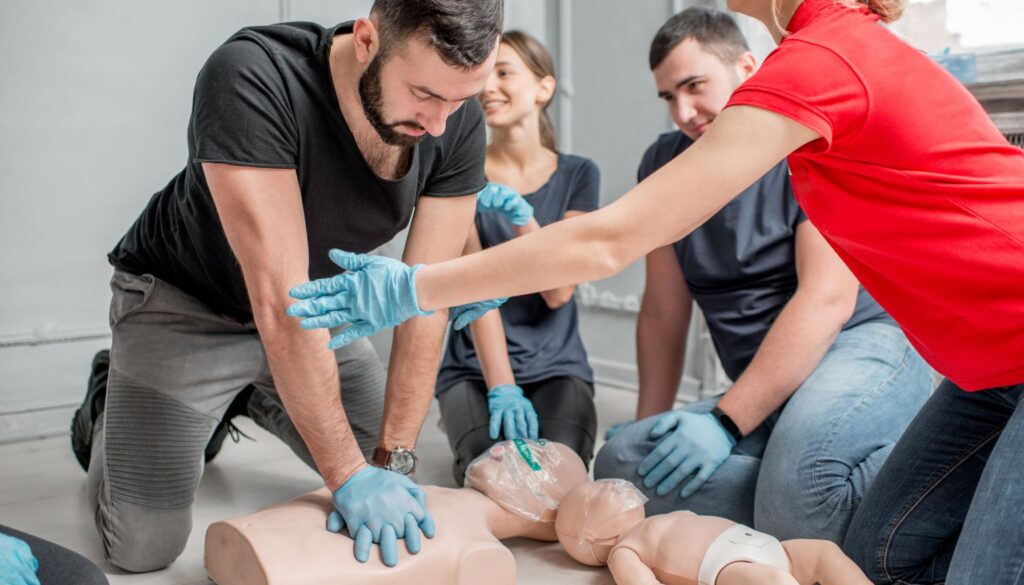
Vaccination Programs
Vaccination programs play a crucial role in biohazard preparedness, especially for infectious diseases. Staying up to date with recommended vaccinations helps minimize the risk of contracting and spreading biohazardous diseases. Following vaccination schedules and guidelines provided by healthcare authorities is essential for safeguarding personal and public health.
Biohazard preparedness ensures a proactive approach to potential hazards, enabling individuals and communities to respond effectively and protect themselves during biohazard events.
Regulations and Guidelines
Several organizations and agencies provide regulations and guidelines to ensure biohazard safety. These include:
Occupational Safety and Health Administration (OSHA)
OSHA sets and enforces standards to ensure workplace safety, including regulations related to biohazard exposure. It provides guidelines for employers to protect workers from biohazard risks and establishes protocols for handling biohazardous materials in various industries.
Centers for Disease Control and Prevention (CDC)
The CDC is a leading public health agency that provides guidance and resources for preventing and controlling the spread of biohazards. It develops guidelines for healthcare settings, emergency response personnel, and the general public to reduce the risks associated with biohazards.
World Health Organization (WHO)
The WHO is a global organization that provides guidance and support for biohazard management and control. It collaborates with member states and international partners to develop policies, frameworks, and guidelines aimed at preventing and responding to biohazard emergencies.
Adhering to regulations and guidelines provided by these organizations ensures the implementation of best practices and the highest level of biohazard safety.
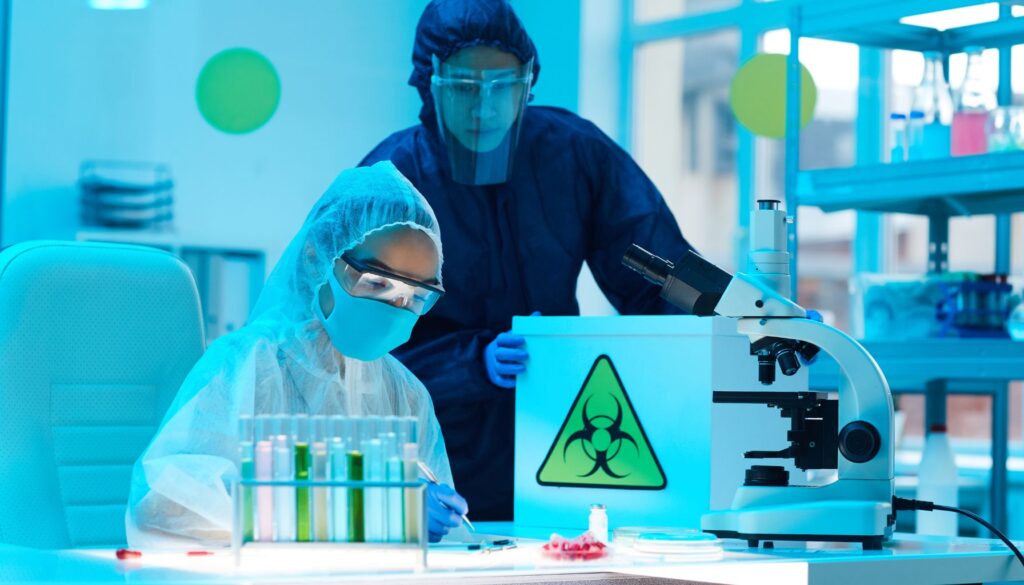
Biohazard Control and Remediation
In situations where biohazards are present or a biohazard event has occurred, it is crucial to implement control and remediation measures to eliminate or minimize the risks. Here are some key aspects of biohazard control and remediation.
Decontamination Procedures
Decontamination procedures involve removing, destroying, or neutralizing biohazardous substances to ensure a safe environment. These procedures can vary depending on the nature and extent of the biohazard. It is important to follow established protocols and guidelines to effectively decontaminate affected areas or materials.
Biohazard Cleanup Services
In cases where biohazard remediation requires specialized expertise, professional biohazard cleanup services may be necessary. These services ensure the safe and thorough removal and disposal of biohazardous materials. Professional technicians equipped with the proper training and equipment can effectively clean and decontaminate affected areas.
Biohazard Risk Assessment
Conducting a biohazard risk assessment helps identify potential hazards and evaluate the associated risks. This assessment involves identifying biohazard sources, assessing their potential impact, and developing strategies to control and mitigate the risks. Regular risk assessments enable proactive management of biohazard risks and the implementation of appropriate control measures.
Effective biohazard control and remediation measures are essential for minimizing the risks associated with biohazard exposure and ensuring a safe environment.
Biohazard Awareness and Education
Raising awareness and providing education about biohazards are crucial for promoting biohazard safety and protecting public health. Here are some key approaches for biohazard awareness and education.
Public Health Campaigns
Public health campaigns play a vital role in raising awareness about biohazards and promoting safe practices. These campaigns can include educational materials, advertisements, community events, and targeted outreach programs. The focus is on providing accurate information, debunking myths, and empowering individuals to take appropriate actions to protect themselves.
Training Programs
Training programs for healthcare professionals, emergency response personnel, and other individuals in biohazard-prone settings are essential for maintaining high levels of safety. These programs cover topics such as infection control, proper handling of biohazardous materials, and emergency response protocols. Regular training ensures that individuals are equipped with the necessary knowledge and skills to safeguard themselves and others.
Community Outreach Efforts
Engaging the community through outreach efforts helps ensure that biohazard safety practices are widely understood and implemented. This can include hosting workshops, seminars, and interactive sessions to educate individuals about biohazard risks and safety measures. Collaboration with local organizations, schools, and community leaders can be effective in reaching a broader audience.
Promoting biohazard awareness and education is crucial for establishing a culture of safety and empowering individuals to protect themselves and their communities.
In conclusion, understanding the risks associated with biohazards and implementing appropriate safety measures are essential for protecting yourself and others. By recognizing the different types of biohazards, their sources, and methods of transmission, you can effectively safeguard your health. Adhering to biohazard safety precautions, both at work and at home, ensures a healthier environment. Being prepared for biohazard emergencies and following regulations and guidelines further contribute to protecting public health. Biohazard control, awareness, and education play vital roles in minimizing the risks and promoting safe practices. By staying informed and taking proactive steps, you can reduce the potential harm posed by biohazards and maintain a safer and healthier lifestyle.
Contact PureOne Services Now
Disclaimer: All PureOne Services locations do not hold all of these listed certifications.



